Palmetto is a type of tree with many different names, including sabal palmetto, blue palmetto, and Carolina palmetto. It is one of 15 different species. Palmettos are native to the southeastern United States and have been cultivated for centuries in southern and eastern countries.
Palm trees grow very tall and can grow to be very large. In many parts of the country, palm trees cannot be grown in a zone that is cooler than that of the palmetto. Palmettos, on the other hand, can be planted in a much wider range of climates and soil types. Palm trees are usually grown from seedlings, but they can also be grown from an existing plant or purchased seedlings.
Palmettos are not as tall as palm trees and tend to grow under larger trees. But the difference between these two types of trees is more than just appearance. The palmetto tree is useful for many purposes. Its fruit and leaves are harvested for various uses, including cooking and making palm wine. Read on to learn more about the two trees.
| Characteristics | Palmetto Tree | Palm Tree |
| Height | Palmetto trees grow to about 30 ft | Palm trees grow to about 60 ft. |
| Growth of the trunk | Trunks grow horizontally | Trunks grow vertically |
| Shaped leaves | Fan-shaped leaves | Feather shaped leaves |
| Sized fruits | Berry sized fruits | Heavy and Large-sized fruits |
About The Palm Tree
The palm tree is a member of the family Arecaceae. It belongs to the monocot order Arecales and grows in a variety of growth forms – tree-like, shrub-like, and stemless. These plants are also commonly referred to as palms. They have a variety of uses and are commonly found in tropical areas.

Depending on the species, palm trees can live a long time. Some can live for more than 100 years. Others may only live for a few decades. This means that it is important to care for your palm tree properly. There are some common problems that palm trees can suffer from, and you should be prepared to deal with them if they do.
As they grow older, they will produce flowers. This is their way of spreading seeds. While palm flowers are not showy or abundant, they can attract insects and birds. Some palm trees flower every year, but most have only one or two flowering seasons.
Read more: Growing An Oak Tree Indoors: 5+ Easy Steps To Follow
About The Palmetto Tree
The palmetto tree is a species of tree native to South Carolina. It is a member of the palm family, which dates back about 80 million years to the Cretaceous period. This tree has a spongy trunk and is considered drought-resistant. It is an excellent shade tree, and is often grown as a landscape plant.
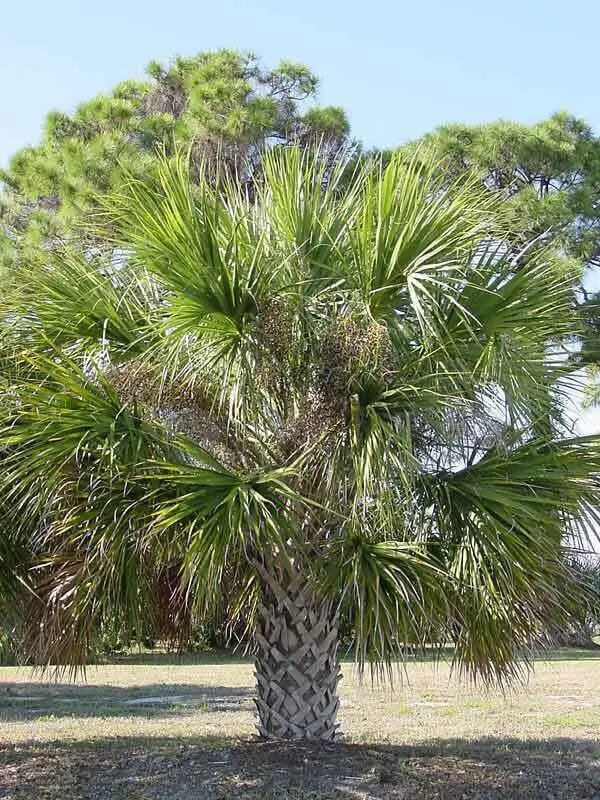
The palmetto is widely planted in the South, and it is the state tree of Florida and South Carolina. It has been the state tree of South Carolina since 1939. Other names for the palmetto tree include cabbage palm, swamp cabbage, blue palmetto, and North Carolina palmetto.
Characteristics Of The Palmetto Tree
The Palmetto is a large tree, growing to about 30 feet. Its trunk grows horizontally and the leaves are fan-shaped. The fruits are berry-sized. It grows in both freshwater and saltwater environments, and can tolerate fluctuations in freshwater levels.
Palmetto trees grow to about 30 ft
Palmetto trees are an attractive addition to a landscape. They grow upright and add about a foot of height each year. Most types are upright, but some have a slender trunk and grow to just a few feet tall. Palmetto trees are commonly used in landscapes as accents and border plants.
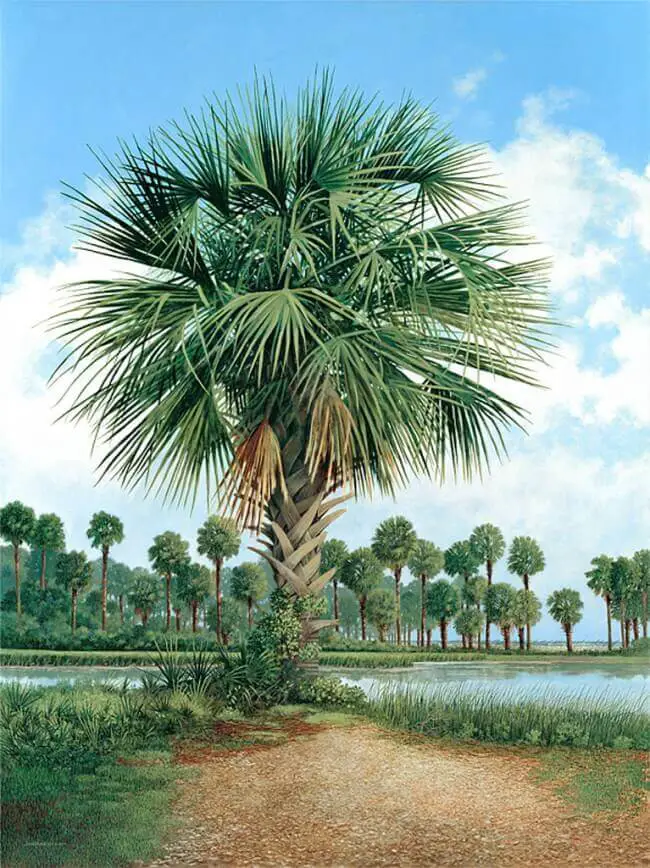
Palmetto trees are native to the coastal plain from South Carolina to Louisiana. They produce berries between 100 and 500 in June and tolerate drought. They grow slowly from a root system growing from the bottom of the stem. Palmettos are also used for firewood.
Read more: Is Your Spider Plant Falling Over? Here Are Some Solutions
Trunks grow horizontally
The palmetto tree has long roots that extend horizontally. This helps the tree absorb water, which makes it grow faster in warm weather. Moreover, the exposed roots on the trunk increase the surface area for absorption. The adventitious roots, which grow above the trunk, are inactive.
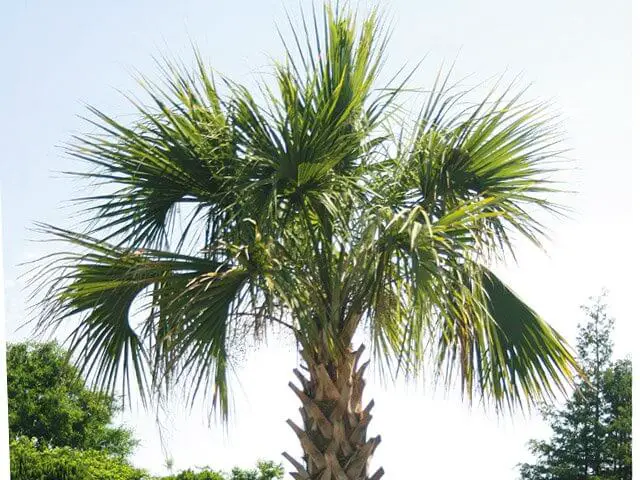
Palmettos grow up to eighty feet in height. Despite their short trunks, they have strong root systems and can withstand strong winds. While other trees have woody trunks, palmettos have fibrous roots. Therefore, they are more resilient than most other trees.
Palmetto roots are horizontal, not vertical, which helps them survive in sandy soils. Because they are horizontal, they branch out instead of growing vertically. This allows them to better absorb water and feed the tree.
Fan-shaped leaves
Fan-shaped leaves are characteristic of palmetto trees. This type of palm grows in the southern United States and the West Indies. The leaves of this tree are up to 3.3 feet long and fan out from the stem. It is the official tree of Florida and South Carolina.
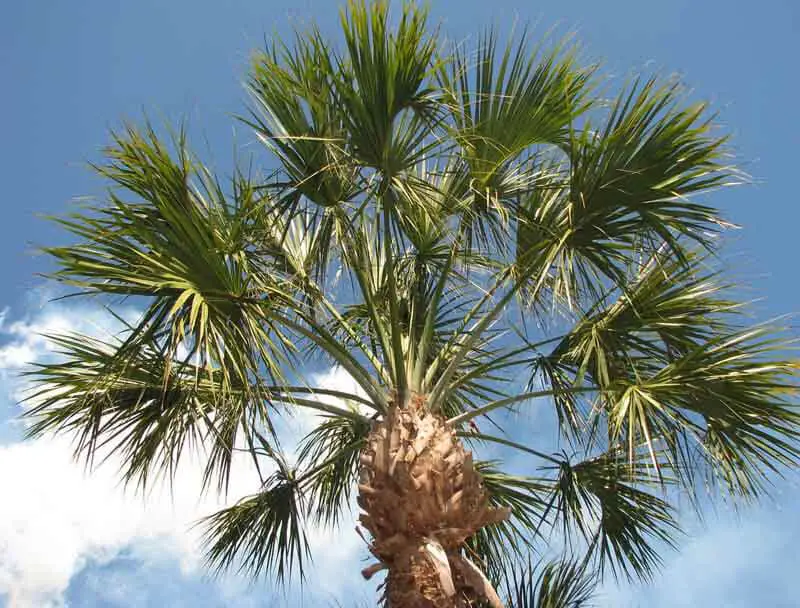
Palmettos are evergreen trees, which are native to tropical climates. They grow in USDA zones nine through 11. These trees are often used for landscaping. They can grow from a height of 5 feet to more than 10 feet tall, and they are drought-tolerant and easy to maintain. The fan-shaped leaves of this palm tree are edible.
Sabal palmettos are tall, graceful trees with drooping fan-shaped leaves. Their foliage is bluish-green to olive green. The leaves have sharp thorns on their petioles. They produce small, oval fruits. When ripe, they turn a deep blue color.
Berry sized fruits
Palmetto trees produce small, berry-like fruits during the fall months. Clusters of white flowers are used for pollination, and once the fruits are ripe, they fall to the ground. Depending on the species, they can produce up to 500 fruits in one season. The fruits are edible and are harvested for food or used as a source of fiber. The palmetto’s seed coat prevents germination, and some varieties rely on animal digestive tracts to disperse seeds.
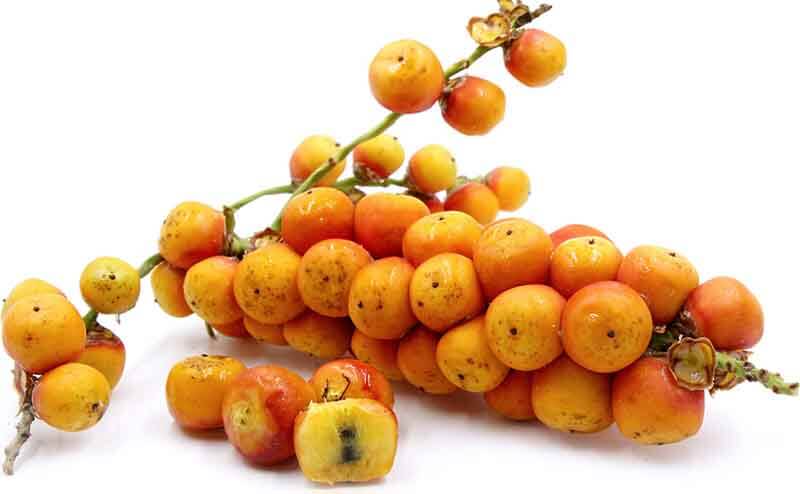
The Palmetto tree grows in a variety of habitats. It is typically found on the shores of salt flats, coastal dunes, and adjacent mainland. It also grows on flood plains along major rivers in Georgia and South Florida. In central Florida, it grows on fine sandy soils, often with subsoils of marl and limestone. It also colonizes interhammock glades.
Read more: 7+ African Violet Leaf Problems And Their Solution
Growing Conditions
The palmetto tree grows in warm temperate climates. The palmetto’s growing conditions are mostly humid with an annual rainfall of 1000 to 1630 mm. The minimum and maximum temperatures range from -4 to 36°C. The palmetto’s growing conditions are best suited for warm climates such as the southeastern United States.
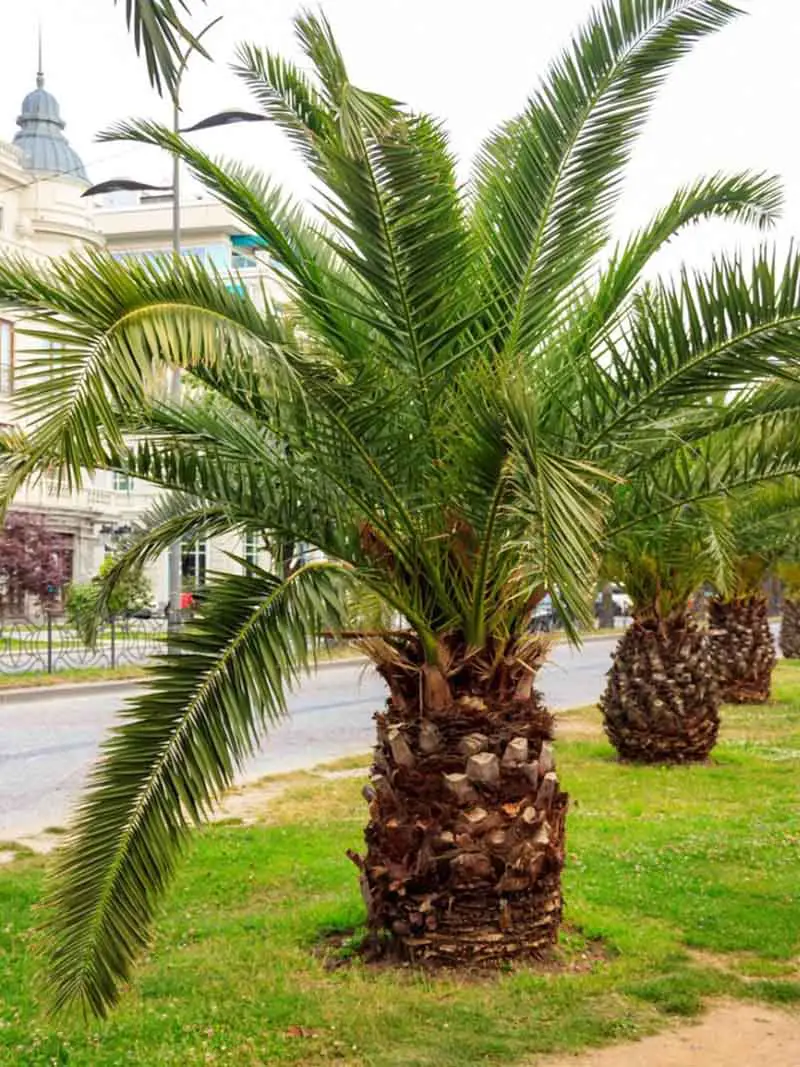
The palmetto’s broad distribution means that it can be found in a variety of habitats. Its range includes salt flats, barrier islands, cactus thickets, wet prairies, and freshwater cypress swamps. It also grows with many other species, such as the South Florida slash pine and other tropical hardwoods, and is common along limestone outcrops.
Palmettos can grow from ten to 70 feet tall and up to 18 feet wide. They are difficult to transplant, so you should plant them in containers. They tolerate some salt spray.
Characteristics Of The Palm Tree
The palm tree is a tall, evergreen tree with a trunk that grows vertically. The leaves are feather-shaped and it bears large, heavy fruits. It can grow to be about 60 feet tall and the trunks are vertical. If you’d like to know more about palm trees, read on.
Palm trees grow to about 60 ft.
Palm trees are tall, but they are not as tall as other tree species. They can reach a height of about 60 feet. They are also known as date palms. Some varieties are shorter and can grow to only a few feet tall. Palm trees are able to withstand a wide range of climates.

Palm trees are tall trees that are suitable for tropical climates. Some species are slow-growing, while others are fast-growing and have long trunks. If you are looking for an exotic look, consider the Queen palm. It has wide leaves and a tall trunk and grows to about 40 to 60 feet. This species is also hardy and requires moderate watering.
If you are planning to plant a palm tree, consider its growing conditions. For example, if you live in a warm region, it will grow much faster than an indoor plant. But if you live in a cool climate, you can grow a palm tree indoors. Depending on the location, some species will grow up to 60 feet.
Maybe you like: Japanese blueberry tree texas
Trunks grow vertically
Palm trees are members of the monocot family, one of the eight major groups of plants. This group is composed of flowering plants and includes the largest percentage of plants on earth.
Palm trees also contain more than 70,000 species, making them one of the largest plant families. In addition to the monocots, the palm family has several species in the eudicot family, which comprises about 175,000 species.

Palm trees differ from most hardwood trees in their trunk structure. They have an unusually broad, hollow stem with hundreds or thousands of conductors. Palm stems often contain two unequal regions, the central portion is thicker and softer, and the outer portion is composed of densely packed fibres that are very hard to cut. Because of their sturdy stems, palms are usually left in place even after forests have been cleared.
Feather shaped leaves
One of the most iconic types of palm trees is the feather-shaped palm. These large, leafy plants are very popular and are often used in landscaping. While most palm leaves are pinnate, some are palmate.
The difference between palmate and pinnate leaves is in the way the leaflets are attached to the stem. In palms, the leaflets are usually V-shaped with the midvein positioned at the apex. Palm leaves with upright V-shaped leaflets are induplicate, while those with inverted V-shaped leaflets are known as reduplicate.

The feather palm tree is a beautiful addition to any landscape. The small branches and trunk of this palm make it a great addition to any backyard or garden. The foliage of this palm is light green with bluish gray tips. The leaves are two to four feet long and have spines at the edges. It also has orange fruit. The feather palm tree grows in warm climates and makes a beautiful focal point.
Maybe you also like: Petite mishima plant care
Heavy and Large-sized fruits
Palm trees are tropical and subtropical plants native to South America. They are found in 67 genera and over 1440 species. Of these, the largest number is found in Brazil and Indonesia, and the majority are found in Asia.
The largest number of palm species can be found in Brazil, where there are 39 genera and over 200 species. They are very valuable economically because of the large number of different compounds they produce. They are often used for various local industries.
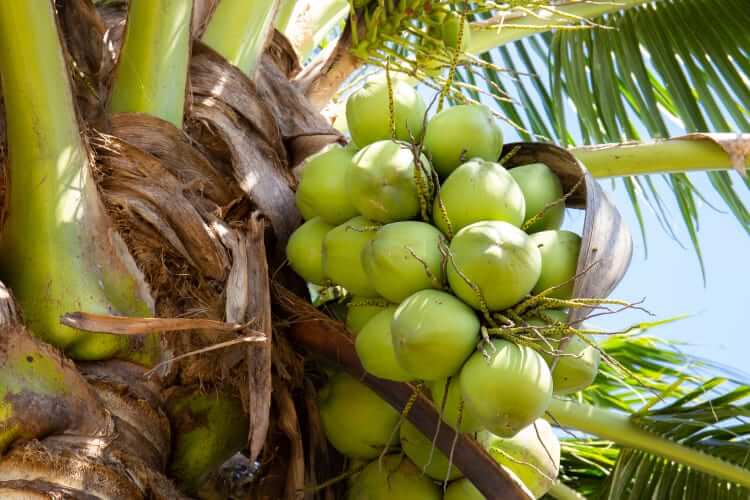
The palm is a single-stemmed palm with large, evergreen leaves that are palmate and pinnate. The leaves have a tubular sheath at the base that splits open at the base at maturity. A spike of leaves surrounds a flowering branch called the inflorescence. At maturity, these bracts are woody. The flowers are small, radially symmetric, and usually white or yellow in color. Each petal is attached to a central part of the pistil.
Growing Conditions
There are several ways to improve the growing conditions of the palm tree. Palms are commonly associated with desert conditions, but in fact, they are native to areas that have plenty of water. To maintain optimum growing conditions, palms need adequate water and should be watered regularly. If the soil is too acidic, you can add pelletized limestone. Alternatively, you can use organic compost as a mulch.
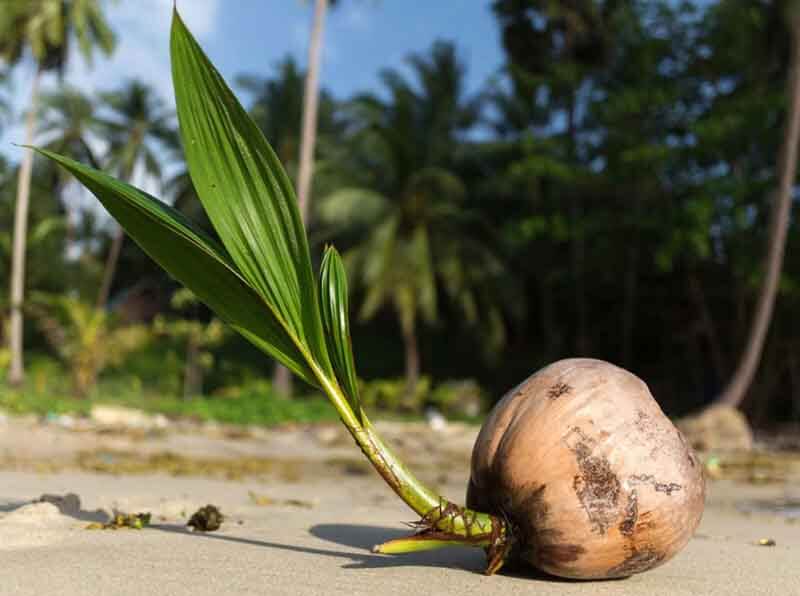
The root system of the palm tree is prone to diseases. Palm diseases are caused by fungi and molds. If left untreated, these diseases can kill the palms. They also spread through the environment. Some common palm diseases include Fusarium wilt, Sooty mold, and Phytophthora root rot. To avoid these problems, you need to learn more about palm diseases and how to deal with them.
Final Thought
Palm trees vs palmetto trees are two different types of trees that grow in different climates and with different growing conditions. Palm trees are taller and typically grow close to houses, while palmetto trees are shorter and grow more northerly. The palmetto tree has more versatility, and it can survive in many types of soil, including sand.
The palmetto tree is a woody plant that reaches a height of 20 to 30 feet. The trunk is surrounded by large costapalmate leaves that form the crown. While many people consider a palmetto a tree, others disagree, citing the lack of branches and smaller size.
Read more:

